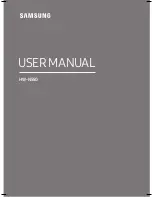
WiLAS Installation & User Guide
10
2.4 Remote Status LED Indicator
The tri-colour LED on the front face of the Remote (figure 2) illuminates whenever a button is
pressed. The colour of the LED provides important diagnostic information on the status of
the Remote. Table 2 summarises the status condition represented by each colour:
Table 2
– Remote LED Status Conditions
The Remote has *
not
* received an acknowledgement message from the Master Control
station to verify reception of its transmission. If the status light persists in showing red for
more than 3 seconds then you should move the remote closer to (or within line-of-site of) a
Control Station.
The Remote *
has
* received an acknowledgement message to confirm that the Master
Control station successfully received its transmission.
Low Battery warning. The Remote’s internal batteries are low and should be replaced as
soon as possible to ensure reliable operation. (Refer to section 2.5) (The Orange LED will
also flash approximately once every 10 seconds even when not in use to denote a low
battery condition)
2.5 Remote Battery Replacement
The Remote utilises 2 x AAA Alkaline batteries. The batteries should be routinely replaced every 3 months
(or whenever the status LED illuminates orange). To replace the batteries remove 3 x screws on the rear of
the remotes casing. Ensure the replacement batteries are inserted in the correct polarity (refer to figure 3).
Figure 4
:
Remote Battery Replacement
RED
GREEN
ORANGE






































